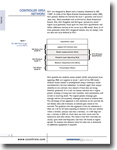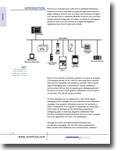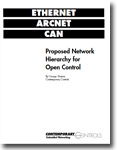 CAN Tutorial
CAN Tutorial
CAN was designed by Bosch and is currently described by ISO 11898. In terms of the Open Systems Interconnection model (OSI),
CAN partially defines the services for layer 1 (physical) and layer 2
(data link). Other standards such as DeviceNet, Smart Distributed
System, CAL, CAN Kingdom and CANopen (collectively called
higher layer protocols) build upon the basic CAN specification and
define additional services of the seven layer OSI model. Since all of
these protocols utilize CAN integrated circuits, they all comply with
the data link layer defined by CAN.
 EXTEND-A-BUS Tutorial
EXTEND-A-BUS Tutorial
Device level networks such as DeviceNet and Smart Distributed
System are low-level networks that provide connections between
simple industrial devices such as sensors and actuators and higher-
level devices such as controllers. Benefits of device level networks
include reduced wiring costs, the ability to exploit the intelligence
present in some low-level devices and improved diagnostic
capabilities from that of hard-wired systems.
 White Paper: Ethernet, ARCNET, CAN - Proposed Network Hierarchy for Open Control
White Paper: Ethernet, ARCNET, CAN - Proposed Network Hierarchy for Open Control
When we discuss control strategy,
the issue of networks is always
raised.
Since network requirements
vary depending upon the
complexity of control,
different
network technologies are usually
specified for the various levels of
control hierarchy.
It is common to
identify three different networks
when describing a control system.
The lowest level is the device
network that is used to link sensors
and actuators to controllers.
Above
that is the control level that links
the various controllers together.
The
highest level is the information
level used to link the control
system to the enterprise-wide
information system.
With the
movement toward open control
systems,
it is only logical to pick
three open networking standards to
complete the control system
networking hierarchy.
What is
recommended here is Ethernet for
the information network,
ARCNET
for the control network and CAN
for the device network.

